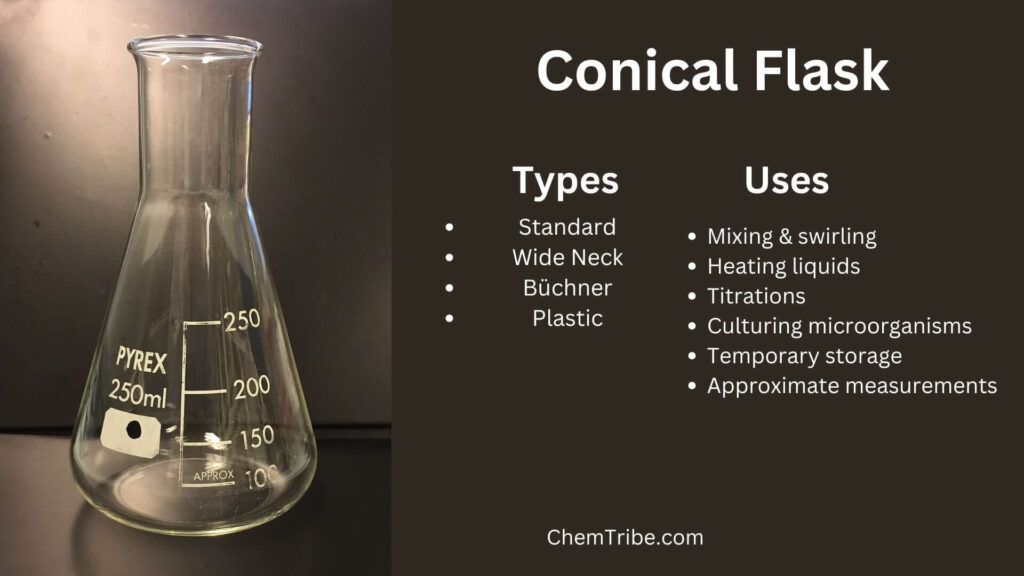
What is a Conical Flask?
A conical flask, also known as an Erlenmeyer flask, is a type of laboratory glassware with a wide, flat base that tapers into a narrow neck. This flask is widely used in chemistry and biology laboratories for mixing solutions, heating liquids, titrations, and culturing microorganisms.
Main Features
The conical flask features a wide, flat base that provides stability on flat surfaces, preventing tipping, and a narrow neck allows for controlled swirling and mixing of liquids without the risk of spilling. The narrow neck also helps in reducing evaporation and preventing contamination, as it can be sealed with a rubber stopper, cotton plug, or screw cap when needed.
Overall, the above design features make it especially useful for chemical reactions, titrations, and culturing microorganisms.
Most conical flasks are made from borosilicate glass, which can withstand high temperatures and chemical exposure, making it suitable for heating, boiling, and storing reactive substances. In some cases, plastic versions are available, and these offer a lightweight and shatterproof alternative for certain applications.
Many conical flasks also come with graduated markings that indicate liquid volume at different levels, allowing for approximate measurements during experiments. Some versions also feature etched scales or labeled capacities to provide additional guidance for users.
Uses of a Conical Flask
- One of the main uses of conical flask is mixing and swirling solutions due to its narrow neck and wide base, which prevent spills during agitation.
- It is also commonly used for heating liquids, as its heat-resistant borosilicate glass allows direct heating on a Bunsen burner or hot plate.
- In titration experiments, the flask’s shape helps contain splashes when adding one solution to another.
- Additionally, it plays a vital role in culturing microorganisms in biology labs, as the design allows for proper aeration when placed on a shaker.
- The flask also serves as a temporary storage container for prepared solutions and chemicals, with options for sealing using a rubber stopper or cotton plug to prevent evaporation or contamination.
- While not as precise as a graduated cylinder, it can be also used for approximate volume measurements in various experiments.
Types
There are different types of conical flasks, each designed for specific laboratory applications. The most common types include:
1. Standard Erlenmeyer Flask
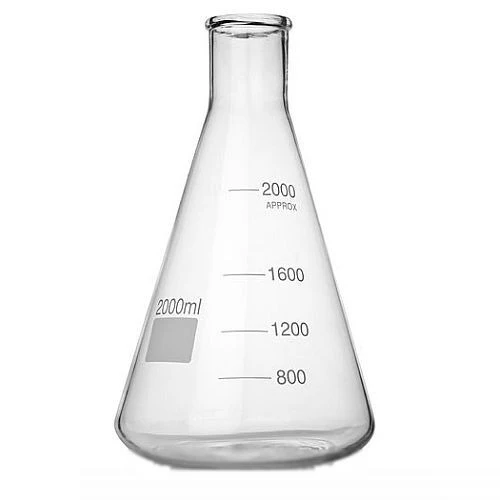
- This is most widely used conical flask with a narrow neck and a wide, flat base.
- Made from borosilicate glass for heat and chemical resistance.
- Commonly used for mixing, heating, and storing liquids.
2. Wide-Neck Erlenmeyer Flask
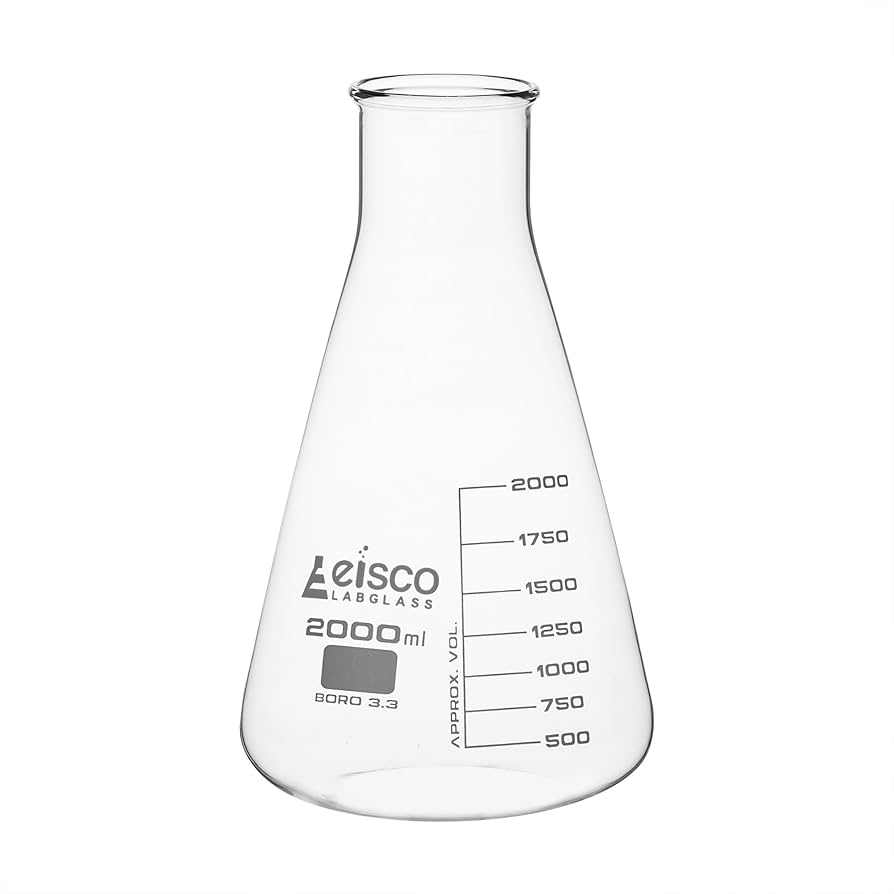
- Similar to the standard version but with a wider opening/neck for easier pouring and stirring.
- Suitable for handling viscous liquids or adding solid substances without a funnel.
3. Filtering Flask (Büchner Flask/Vacuum Flask)
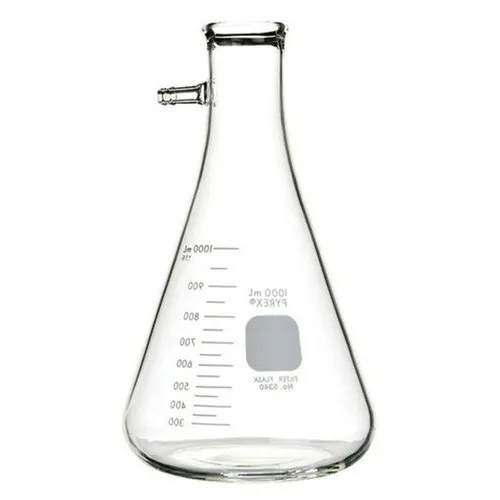
- Has a thicker glass body and a sidearm near the neck for attaching a vacuum pump.
- Used in vacuum filtration, where liquid is drawn through a filter by suction.
4. Plastic Erlenmeyer Flask
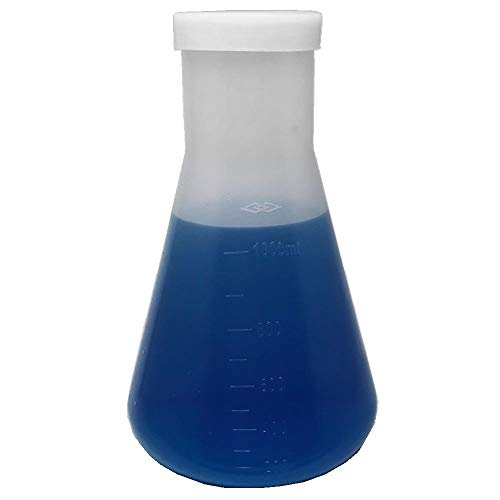
- Made from polypropylene or polycarbonate, making it lightweight and shatterproof.
- Often used in biological labs for culturing cells and in educational settings where breakage is a concern.
Conical Flask Vs Erlenmeyer Flask
Is there a difference between Conical Flask and Erlenmeyer flask?
No, there is no difference between a conical flask and an Erlenmeyer flask—they are the same piece of laboratory glassware.
The term “conical flask” is a general name that describes its cone-shaped design with a wide base and narrow neck. The name “Erlenmeyer flask” specifically refers to the scientist, Emil Erlenmeyer, who designed it in 1860.
Both terms are used interchangeably in laboratories, and they function the same way.



